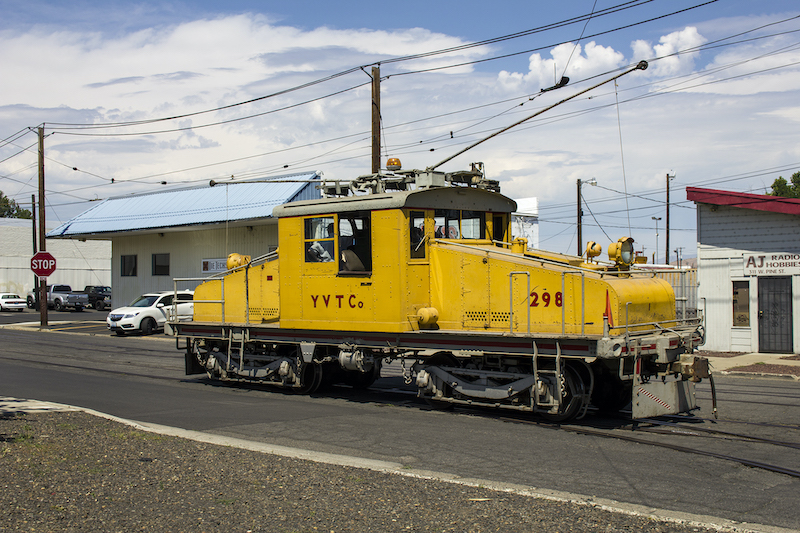By Eric Berger
YAKIMA, Wash.–A rare chance to see one of the electric locomotives of the Interurban Era in action will be available on September 24, during a 100th birthday celebration for Yakima Valley Transportation 298 at the Pine Street carbarn of Yakima Valley Trolleys.
A 50-ton steeple cab built by General Electric, YVT 298 became the primary freight motor on the line when it was delivered in 1922 and remained in that role until the end of commercial operations in 1985. The motor saw occasional use afterward on the surviving heritage line but has spent recent years inside the car barn awaiting traction motor repairs.
Though attendees will get to see YVT 298 moving under its own power, it will be a solo act on this occasion. Work on one of its paired traction motors will apparently not be finished in time for the celebration, so it will have to operate with just two of its four traction motors. Accordingly, YVT 298 will be moving light to avoid putting too much strain on those motors. Plans to have the locomotive pull several vintage freight cars have been postponed until the electrical work is complete, according to a representative of Yakima Valley Trolley.
Construction of the line that would become Yakima Valley Transportation began in 1907 and the company was taken over by Union Pacific in 1909. It began operating with several passenger and freight trolley cars and a rudimentary flatbed electric locomotive built by the Niles Car Company and simply designated “A.” That 1910 locomotive was displaced by the arrival of 298 and was reconfigured for line car service. Today, “A” remains in operating condition.
In 1930, YVT took delivery of three Brill Master Units, the final incarnation of the Peter Witt design that was dominant prior to the introduction of the PCC. Those cars served as YVT 20-22 until 1947 when passenger service was discontinued. The cars were sold to Portland Traction Company in Oregon, where they served another decade before being purchased for preservation by members of the Puget Sound Railway Historical Society Museum in Snoqualmie, Wash. All three were ultimately donated and returned to Yakima. Car 21 is in operation condition, as are two single-truck streetcars built in Portugal on Brill undercarriages in 1928. That pair have been in regular service since being imported from Portugal in 1974 by the Yakima city government to restore limited passenger service.
At its peak, YVT’s system stretched 44 miles. When Union Pacific decided to end operations in 1985, it donated nearly all of the rolling stock and physical plant to the City of Yakima, which wasted no time in transforming it into an operating museum. It is on the National Register of Historic Places as the only fully operational and intact example of an interurban electric railway. (Though Iowa Traction in Mason City, Iowa, survives as the last electric freight line of that era still in commercial operation, also with 100-year-old locomotives, it never revived passenger operations).
Yakima Valley Trolleys was incorporated in 2001 and has handled railway operations for the city since then. For more details on the 298 Centennial celebration or for information on how to donate to its restoration, visit the YVT Facebook page or their website at yakimavalleytrolleys.org.



